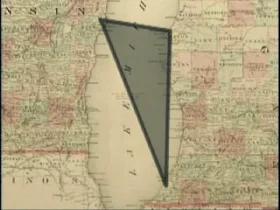The Antikythera Mechanism, an ancient analog computer was designed to calculate astronomical positions and was recovered in 1900 – 1901 from the Antikythera wreck, though its significance and complexity were not understood and it is thought to be one of the most complicated antiques in existence.
Towards the twentieth century, diver, Jacques Cousteau visited the wreckage site in 1978, dived off the island of Antikythera and discovered the clocklike mechanism which is presumed to be around 2,000 years old, found in the wreckage of a cargo ship. Though he found the new dating evidence, he did not find any other additional remains of the said mechanism.
The device was very thin which was made of bronze and was mounted in a wooden frame having more than 2,000 characters inscribed all over it. There has not been a publication of the full text of the inscription though almost ninety five percent of the same has been deciphered by experts.
Calculate Movement of Stars and Planets
It is believed to be an mechanical instrument which could have be used to calculate the movements of stars and planets in astronomy and has been estimated to have been built around 87 BC and was lost in 76 BC.
No one seems to be aware of its existence on the ill-fated cargo ship which was a Roman ship while the Antikythera mechanism was developed in Greece. Some were of the opinion that it could have been on the Roman ship since the instrument was among the spoils of war derived by the Roman emperor Julius Caesar at that time.
From the x-ray it was revealed that there are at least 30 various gears present in it. Extensive researches have been done by British historian Derek Price,on the purpose of the antikythera mechanism what it could have been used for. It was only towards 1959 that he put forth his theory that the device had been used in astronomy to make calculations and predictions.
Price presented a model of how the antikythera mechanism could have functioned in 1974 in which past and future dates were entered into the device where it calculated the astronomical information related to the Sun, Moon as well as the other planets.
Some Confirmed Discoveries
Some of his discoveries have been confirmed by more recent researches done by various other scholars and scientist though the full extent of the device’s function yet remains a mystery. Price was also of the opinion that the device could have been on public display in a museum or a public hall while others have also come up with their variants of the ancient computer based on the discovered model.
A joint project is also in progress to study further on this amazing device for the advancement of technology of ancient times. Known as the Antikythera Mechanism Research Project, the same is in collaboration between Cardiff University, the National and Kapodistrian University of Athens, the AristotleUniversity of Thessaloniki, the National Archaeological Museum of Athens, X-Tek Systems, UK and Hewlett-Packard, USA.
The project is being funded by the Lever Hulme Trust with the support of the Cultural Foundation of the National Bank of Greece and since the study, great progress has been made with more than eighty fragments of the mechanism that have been discovered.




























